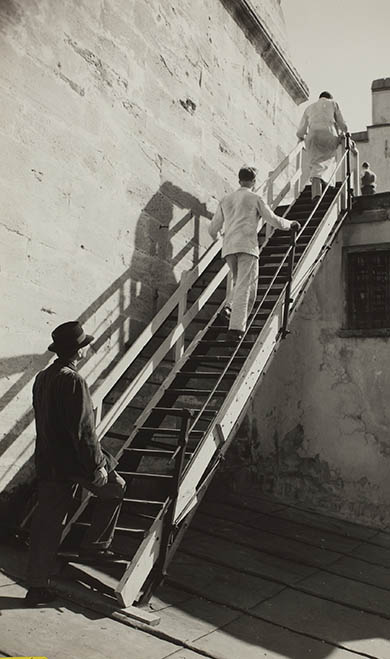
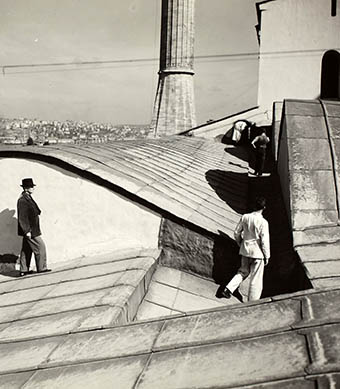
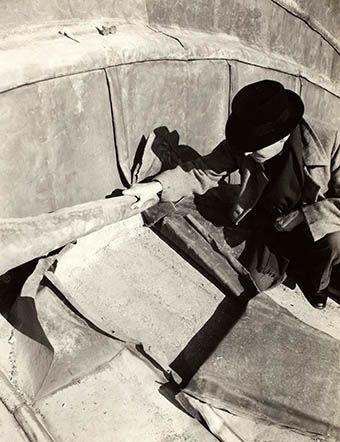
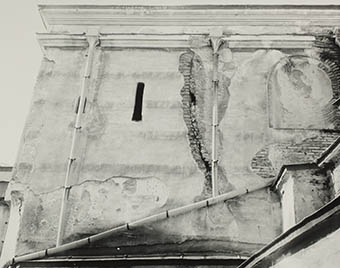
interior dome cornice pictures
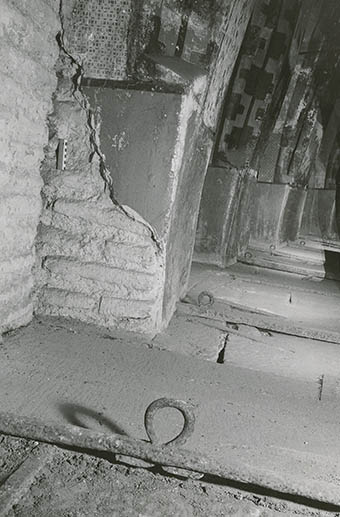
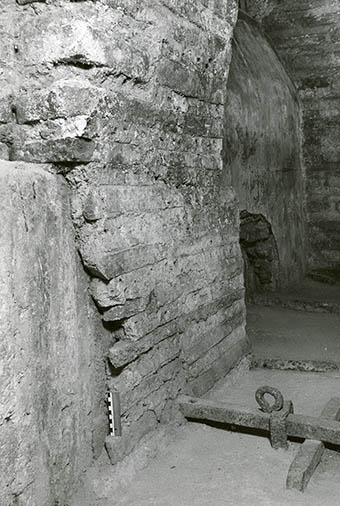

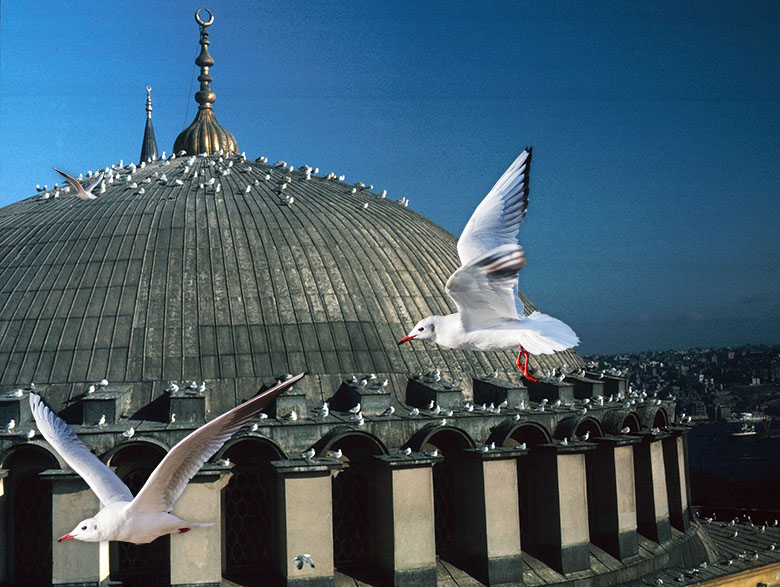
Hagia Sophia is a vast domed basilica that towers to height of a 15 story building. it was built in six years, from 532 to 537 by Justinian's architects, Anthemius and Isadore. It is famous for its enormous and breathtaking dome, that still soars over the nave of the church. The dome we now see is the second, which has been extensively repairs over the years. The first dome was too shallow in its pitch and collapsed into the nave in 558, destroying most of the splendid furnishings of the church that Justinian had built of silver and semi-precious marbles. Justinian entrusted the rebuilding of the second dome to Isadore the Younger, nephew of the first Isadore. The dome was raised by 6.25 meters in height and a ring of windows was added. This dome was severely damaged on two occasions 986 and 1354. In 986 part of the western dome and semi-dome collapsed in an earthquake. An Armenian architect, Trdat was brought in to repair the damage. His work distorted the curve of the western semi-dome. He also rebuilt the top of the western arch thicker and taller which extended it into the dome. His strange and irregular repairs were brutal and heavy, he was obviously taking no chances that his work might fail. It closed up some windows and added tie beams in white oak wrapped in lead. these tie beams were not properly seasoned and were attacked by fungus. This repair also required new mosaics in the semi-dome and western arch. There were large figures of Peter and Paul and a circular image of the Mother and Child. These survived in part until at least 1850 when they were recorded by the Fossati brothers during their restoration. They were probably scraped off around 1900 in an Ottoman restoration. We know that the work of restoration the Fossatis began in the 1840s was not completed until 1899-1900 when work was finished on he dome and the pendentives. Up until then mosaics and plaster were still falling from the vaults, especially in the galleries, which were usually closed because of the danger.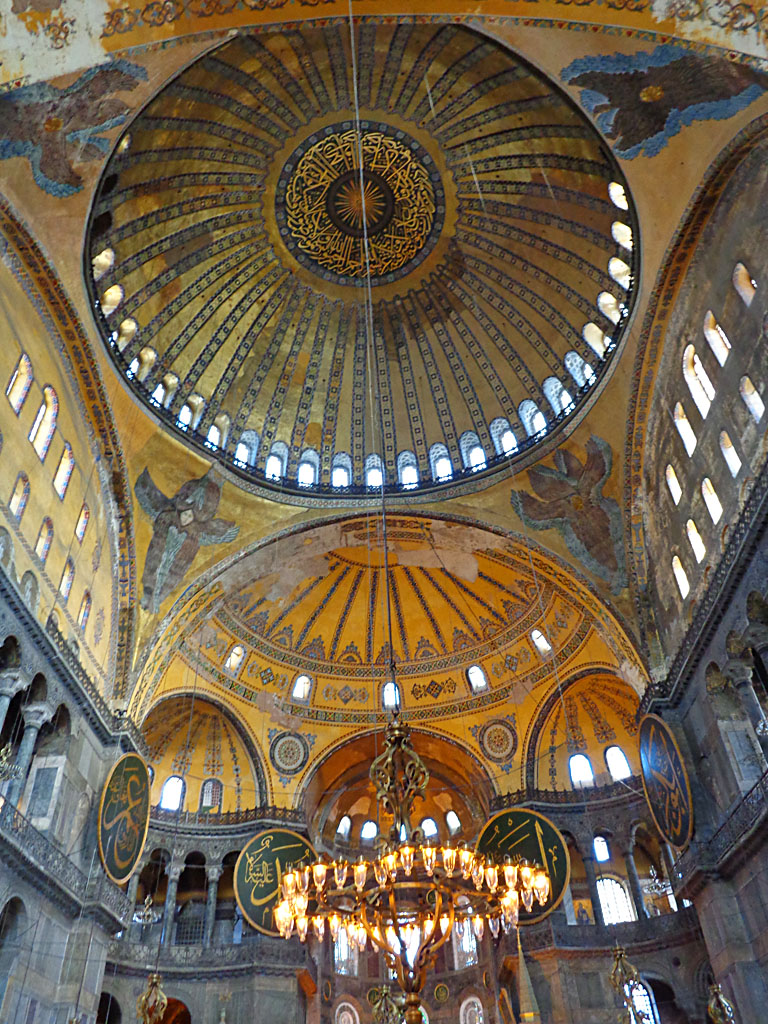
The next repair was done in 1347. A few years before serious cracks had developed in the eastern arch and semi-dome after an earthquake. Nothing was done to repair the damage - mosaic and chunks of mortar and brick were falling into the sanctuary and damaging the chancel screen and altar. It was also dangerous for the clergy working in the church. Finally a great part of the dome and eastern arch fell into the church doing enormous damage to the chancel screen and destroying all of the icons along with the chancel screen, the altar with the great arched ciborium and wrecking the solea and part of the ambo.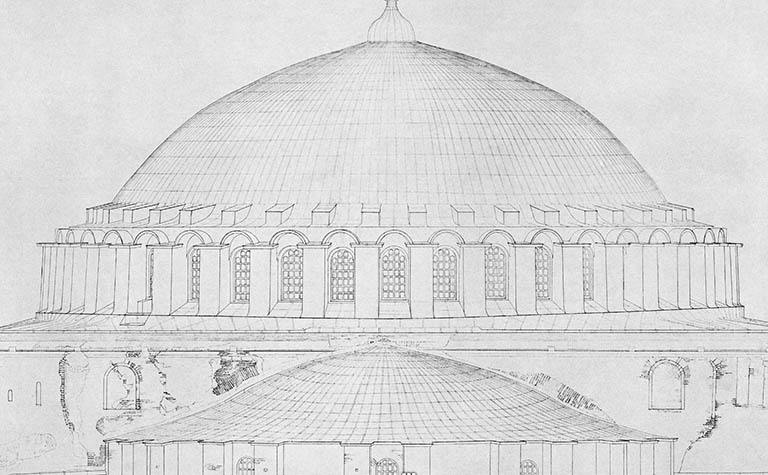 Cross section of the dome facing west, drawn by Robert Van Nice and published in his 1965 book.
Cross section of the dome facing west, drawn by Robert Van Nice and published in his 1965 book.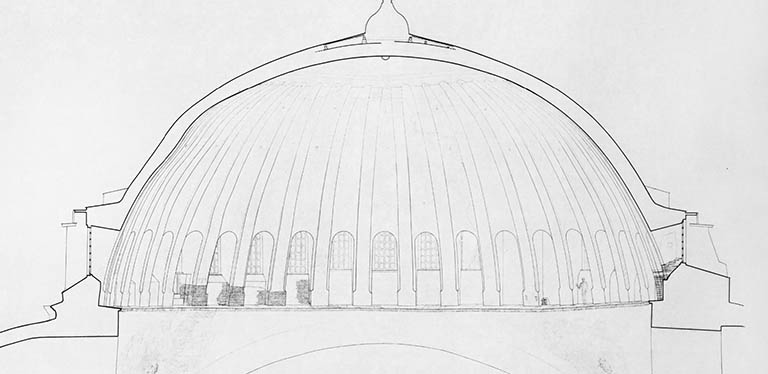 Cross section facing south showing the bulge in the dome. On the right you can see a small man, this indicates the scale. In Byzantine times visitors could arrange to visit the dome cornice. Singers went up here, too. There was a railing. As far as I know there are no records of falls from the cornice.
Cross section facing south showing the bulge in the dome. On the right you can see a small man, this indicates the scale. In Byzantine times visitors could arrange to visit the dome cornice. Singers went up here, too. There was a railing. As far as I know there are no records of falls from the cornice.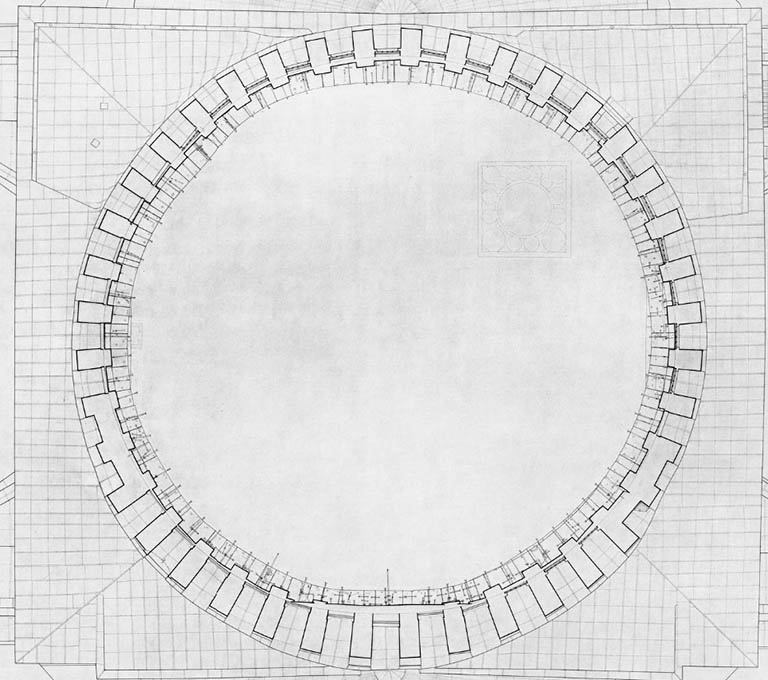 A drawing by Van Nice of the top of the dome facing east. At the bottom of the drawing you can see how Trdat's wider and taller arch has protruded into the curve of the dome.
A drawing by Van Nice of the top of the dome facing east. At the bottom of the drawing you can see how Trdat's wider and taller arch has protruded into the curve of the dome.
The repairs were conducted by a team of Greeks and Italians led by the Grand Stratopedarches George Astras, Faciolatus and Giovanni Peralta. The Imperial court was very poor at this time and wracked by civil wars. Donations for the work were collected from all over the Orthodox world. The great princes of Russia gave a lot of money to the effort, but this money was diverted by John V to pay his Turkish mercenaries. John V was criticized for the length of time it took to complete the work and had to tax the citizens of Constantinople to finish it. The work, which was completed by 1354, was poorly done and hastily completed once the project was funded. Many of the materials - including the marble blocks of the dome cornice - were salvaged from the ruins found on the floor of the nave. Even bricks were salvaged to save money, although most of them were made new for the rebuilding. The restoration did not correct a bulge in the northeast pendentive and a another one in the dome, which broke its curve. These defaults are apparent in Robert Van Nice's drawings. Although the work was badly done it has survived for almost 700 years of earthquakes - so it has done its job.
After the structural work was done the mosaics of the great eastern arch, the two eastern pendentives and the dome - including a gigantic image of the Pantokrator - had to be redone. The Byzantine historian Nikephoros Gregoras described it:
"Having reached this point, it would be fitting to set down the length and breadth of the holy image of the enhypostatic, Wisdom of God, I mean Christ our Savior, that was recently depicted on the inner curved surface of the roof. It is worth reflecting, I think, that when one looks up [at the image] from below, one is unable [to apprehend] by means of sight its true proportions and transmit them to the mind, since sight is unusually deceived by the interposition of distance between the spectator and the object seen. . . . The height [of the head] from its summit to the tip of the beard is 28 palms, its width 14, the first finger 8 1/2 long, and the others in proportion. Each eye is 3 palms, and the nose is nearly 8. Now that I have given these elements, the more accomplished painters will be able, by using proportional analogy, to reckon straight-away the length and breadth of the other members and parts as well as the conformation of the entire body of that holy image of the Savior."
Although he personally visited the dome cornice, the measurements he gives are incorrect. He obviously didn't do any measurements himself. Those figures were given to him by someone else.
The interior of the gold mosaic in part of the dome had to be replaced. The great seraphim - better called celestial beings - in the pendentives have survived and the face of one of them, which was covered with a brass star in the mid 1800s, was recently uncovered. These celestial beings are two different compositions - their wings are not the same. The mosaic is loosely spaced and is mixed with silver and other glass tesserae to save on costs. The gold mosaic in the dome was also cheaply done and part of the gold mosaic dome - all of the soffits of the restored part of the dome were decorated with paint. The ribs which had been silver and red glass, were set with gray and red stone.
There was a great mosaic of Christ in the dome. The mosaic was one of the few covered up during the Ottoman period, even this mosaic was spared destruction for several hundred years after the conquest. It seems to have been covered up with paint in the mid-eighteenth century. It could have been destroyed at that time. It was most probably gone by the time the Fossati brothers restored the building for the Sultan in 1847-49. Recent surveys have also shown that the entire area where the mosaic would have been was stripped of plaster and any remaining mosaic between 1894 and 1909 when replastering in the dome was conducted by the Muslim VAKIF. This area was entirely restored in paint and now looks very flat and dead. The dome should be restored in gold mosaic where it has been stripped. It is very distracting and affects the museum visitor experience badly. The gold mosaic of the great eastern semi-dome should also be restored.
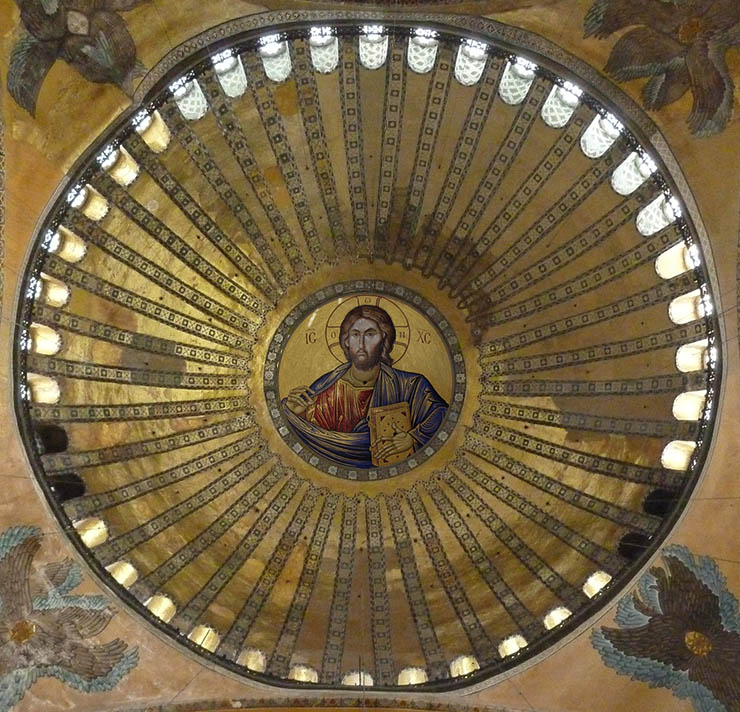 Digital restoration of the Pantokrator mosaic in the dome of Hagia Sophia facing east.
Digital restoration of the Pantokrator mosaic in the dome of Hagia Sophia facing east.
The restoration of 1354 also included the mosaics of the bema arch. The setting beds of these mosaics have survived. They included big mosaic figures of John the Baptist, an orant Theotokos and figures of John V Palaiologos and his mother, Anna of Savoy. In the summit of the arch was a throne with a Bible placed on it - the Hetoimasia, a symbol of the Second Coming. These mosaics were also left uncovered until at least the middle of the eighteenth century.
Mistakenly believing the four external dome buttresses were 14th century or later, the Fossatis removed them, not knowing they dated from the 6th century and the building of second dome. They added two iron chains surrounding the dome to secure the dome from earthquakes.
Of the original dome 6 remain on the north and 8 on the south. Trdat replaced 13 ribs and Astras, Faciolatus and Peralta replaced another 13. The current dome has 1030 carved marble blocks.
The dome has always been accessible. There is a door from the outside beneath the middle window of the southeast quarter. During Byzantine times singers climbed to the cornice and performed during ceremonies. Tourists and pilgrims were allowed up in the dome and on the roof. The cornice is a narrow Proconnesian marble circle of 117 pieces which was set on top of the brick arches and it slopes dangerously downward 9 degrees. There is an inside railing. The dome has 40 windows and 40 brick ribs.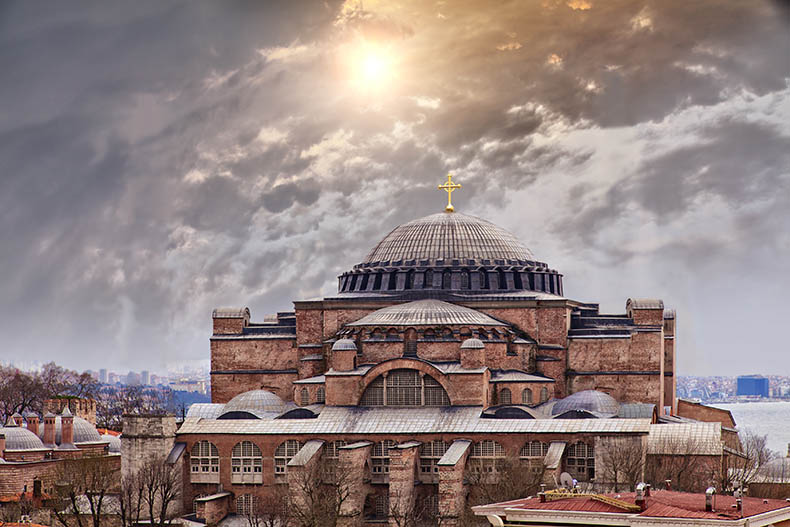

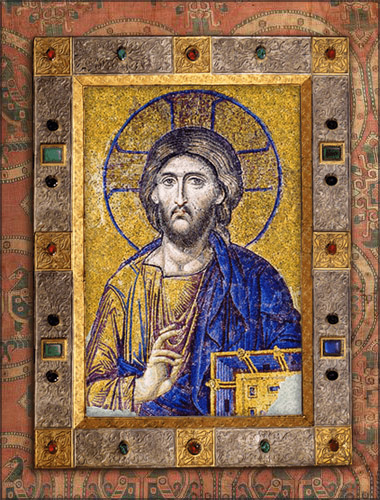







 click here for icons of christ
click here for icons of christ click here for icons of the theotokos
click here for icons of the theotokos click here for icons of angels
click here for icons of angels click here for icons of saints
click here for icons of saints